Survivor Six: 1968 Triumph TR250
Sean Rooks | October 17, 2025

Good Find Friday features interesting vehicles we’ve found for sale while conducting market analysis or appraisal research. They are not for sale by Wolf and Mare and we have no business relationship with the sellers. We just think they’re worth learning about and sharing with our readers!
The most beautiful Triumph motor car is almost certainly the Triumph Italia, but if there were a runner up it would have to be the TR4, in my opinion. I’ve always aspired to own one of these lovely little British roadsters, even though they’re not the fastest — it famously featured an engine derived from a tractor. In today’s Good Find Friday, I’m featuring what is arguably the best of the breed (for the United States): the Triumph TR250.
The Triumph TR250

The TR4 and TR4A marked a period of modernization for Triumph’s sports car lineup in the early 1960s. The TR4, introduced in 1961, featured a new body designed by Giovanni Michelotti, replacing the earlier TR3’s styling. Underneath, the car was still basically a TR3A, owing to the company’s need to restrain costs while updating its appeal for changing tastes in the marketplace. The new model included welcome updates, however, such as wind-up windows, a full-width dashboard, and a larger boot. The TR4A, introduced in 1965, retained the same 2.1-litre four-cylinder engine but added independent rear suspension, improving chassis design and alignment with evolving sports car standards.

Introduced in 1967, the TR250 was built for the North American market and was closely related to the TR5. Both models shared the same chassis, suspension, and Michelotti-styled body carried over from the TR4A, but were equipped with a 2.5-litre inline-six engine. The TR5 used Lucas mechanical fuel injection and produced approximately 150 horsepower, while the TR250 used twin Zenith-Stromberg carburettors to meet U.S. emissions regulations, yielding about 111 horsepower. Production of the TR250 lasted from 1967 to 1968, with available options including overdrive, wire wheels, and the removable-panel “Surrey Top” roof system.
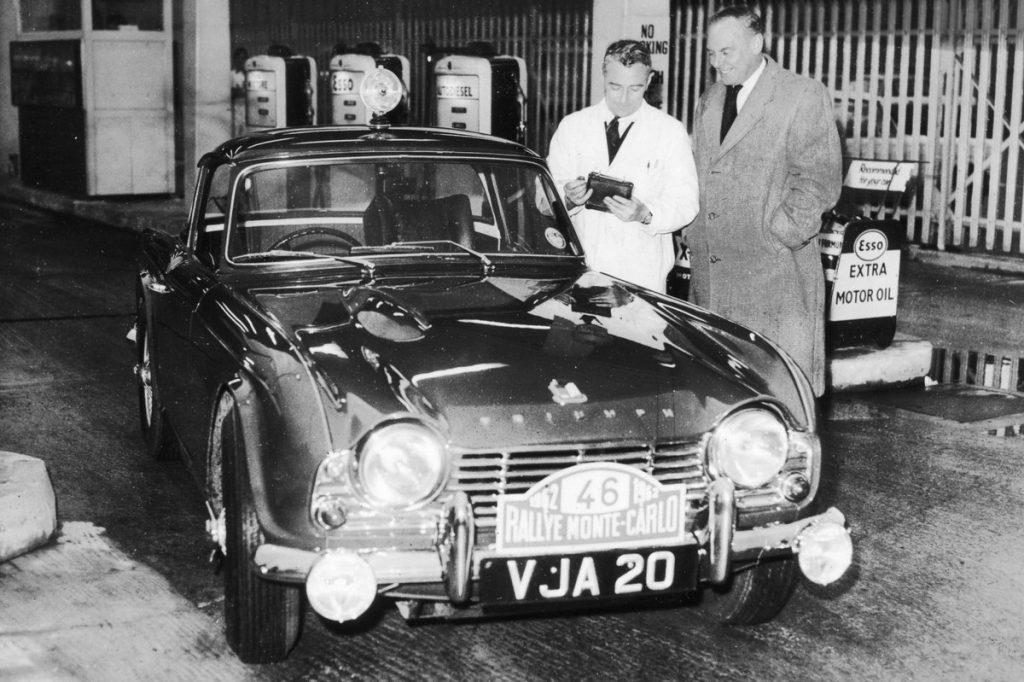
Car and Driver was apparently unhappy with the performance of the TR250 relative to its predecessor, saying the engine lost revs very slowly and the butterflies in the carburetors were too slow to close. As a result, many TR250s were fitted with Weber carburetors with a more aggressive cam to better match its fuel-injected European counterpart.
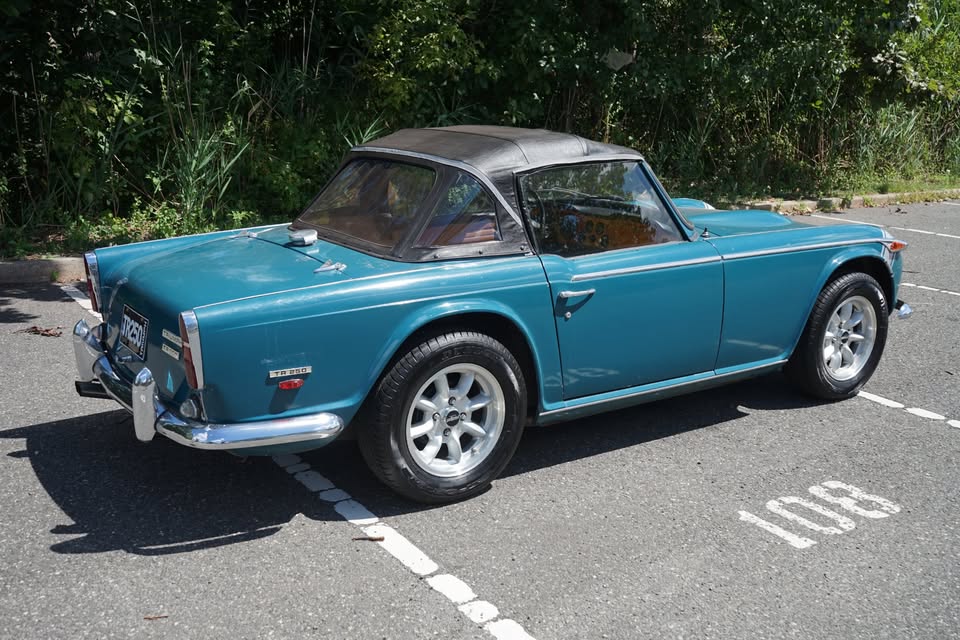
Offered on Facebook Marketplace by the seller in New Jersey, this 1968 Triumph TR250 is painted in its original color combination of Valencia Blue with a tan interior. The list price is $25,900.
According to the description, the car is in driver-quality condition with some patina from age. From the numerous included photos — a good sign — one can spot some paint defects behind the convertible top, a bit of rust poking out from beneath the decorative trim, rock trips and scuffs around the body and some light patina on the chrome bumpers.

Exterior features include TR250 badging, decorative racing strip on the front hood and fenders (peculiar to the TR5 and TR 250), a black top with reflective stripes and aftermarket alloy wheels.

The interior appears to be in rather nice condition, with tan bucket seats in good condition with no rips and a wood dashboard fascia that appears to be free of cracks or failing varnish. The steering wheel is wrapped in an inexpensive perforated cover that shows some damage. Potential buyers should verify all the electrical bits function as they should, including the factory Overdrive.
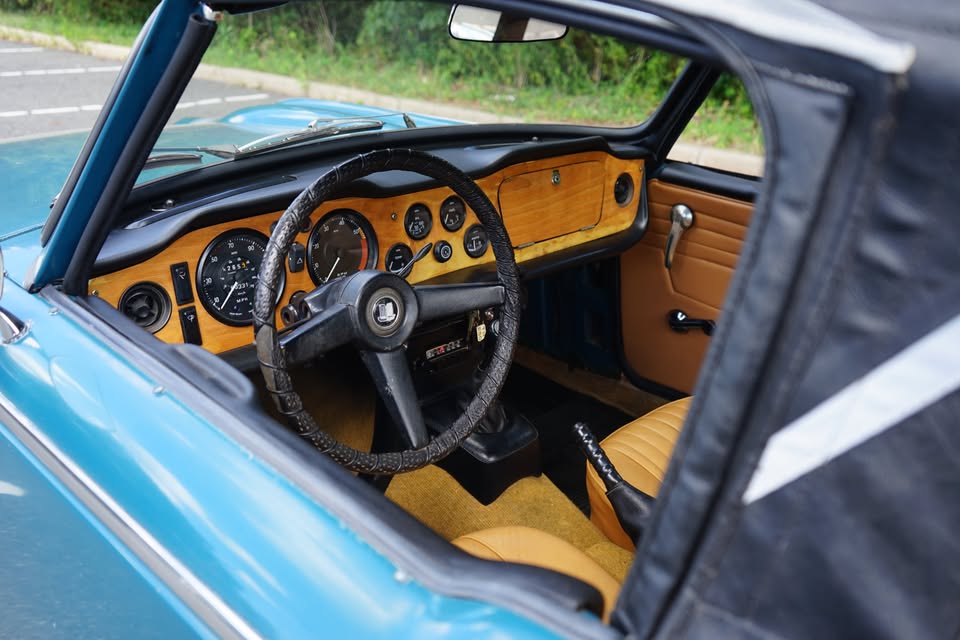
No undercarriage photos are included, which isn’t a red flag but it’s a critical point of inspection on any old Triumph, particularly those with the independent rear suspension. The chassis rails of the IRS cars narrows at the rear and the metal joins at this location are subject to major corrosion. It’s a critical area of the car and if rust is present, best to move on. The owner claims the frame is solid with no rust, but best to verify this in person.
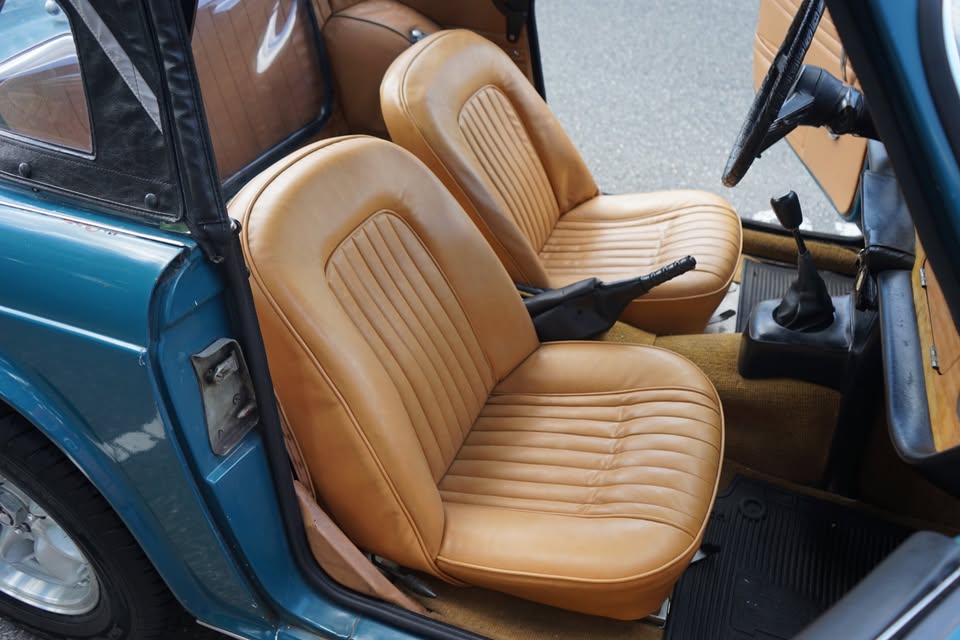
Underhood the 6-cylinder engine looks pretty tidy, with good condition of the finishes and no obvious leaks from the Stromberg carbs. There’s some patina, obviously, but I’ve seen much dirtier. The brake fluid reservoir looks to have clear and clean fluid in it indicating recent maintenance. A new stainless steel exhaust is noted as having been fitted.

The suspension on the TR250 is the same as the TR4A, which included upper and lower wishbones, coil springs and shocks up front. In the rear, you’ll find a pair of trailing arms, coil springs and shocks. This car wears a nice-looking set of Panasport alloy wheels, a common wheel that significantly boosts unsprung weight. As usual, check for play in any and all joints and hubs.
Overall this appears to be a nice car that would need some close in-person inspection to determine the car’s condition and independently determine whether it has any major needs cosmetically or mechanically.
Market Snapshot

The TR250 and TR5 generally command much higher prices than the IRS or base variant TR4s. While the overall horsepower and performance difference is minimal (at least in the United States where the carburetted 6-cylinder was stifled), the 6-pot cars have a mystique and style that is more sporting.

A really nice condition TR250 in green sold a year ago for almost $41,500 on Bring a Trailer. That car had been refurbished with a frame-off repaint and appeared to be in excellent condition.
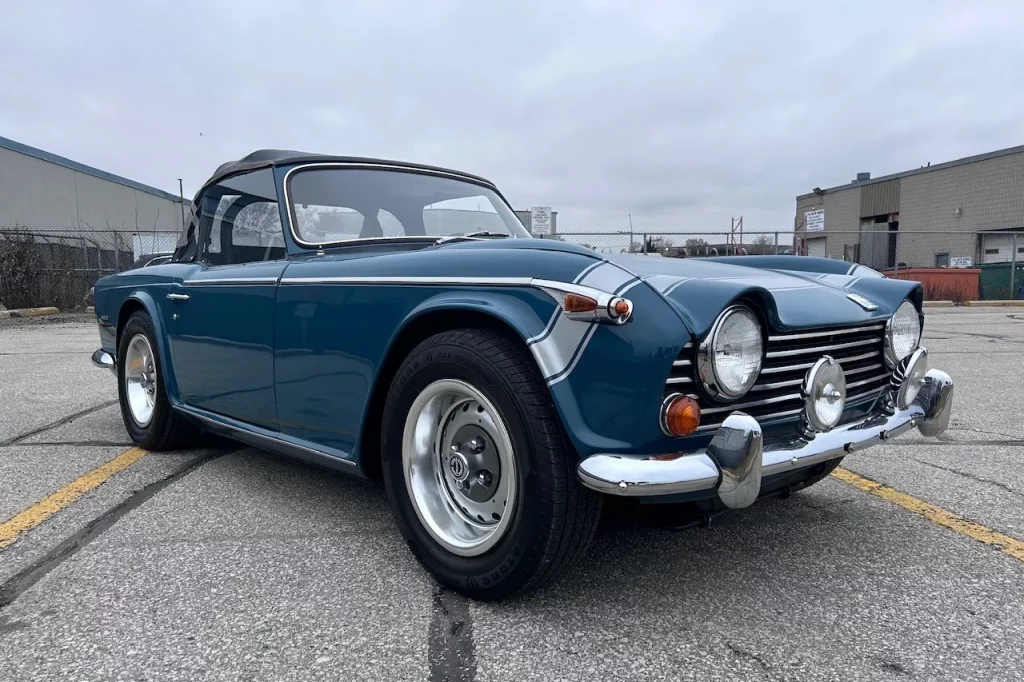
In contrast, a driver-quality TR250 sold a few months earlier for just $18,000. That car sported wheels from a TR6 and a luggage rack fixed to the rear lid — not a desirable accessory for many.
Final Thoughts
Unlike some of the other British classics at the lower end of the market that have seen some positive movement over the last year, values for Triumph TR4s are down by about 12% YOY. The decline for TR250s relative to their successor the TR6 and the MGB is likely due to the fact that they saw a pretty big bump during the pandemic that has since retreated almost completely. Like the Jaguar XK120, values for excellent-condition examples have seen greater growth and less lost value compared to driver-quality cars.
As a result, patina cars like this one may represent a bargain in the current market. Personally, after years of seeing values for the TR4 go higher and higher, I’m pleased that driver’s cars are once again attainable.
Have a great weekend, everyone!
Wolf and Mare provides car finding, appraisal and auction services for sellers and buyers of collector European cars. We also provide importation services. Give us a call or drop us a line!

